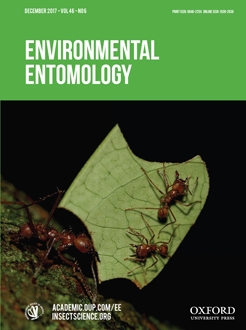The pine bark adelgid, Pineus strobi Hartig (Hemiptera: Adelgidae), is a native herbivore of eastern white pine, Pinus strobus L. (Pinales: Pinaceae), in eastern North America. P. strobi does not appear to have any dominant overwintering lifestage in southwest Virginia, as it does in its northern range. Eggs can be found consistently from late March through early December and may be produced sporadically later throughout the winter during warm periods. Two distinct generations were observed in the spring, after which life stage frequencies overlapped. Adult body size varied seasonally and was greatest in the spring. The present study constitutes the first recording of phenological details of the P. strobi in its southern range, informing biological control efforts aimed at closely related invasive pests. The phenological plasticity observed between northern and southern P. strobi populations provides insight into the potential effects of climate on the population dymanics of this and related species.
How to translate text using browser tools
2 November 2017
Phenology of the Pine Bark Adelgid, Pineus strobi (Hemiptera: Adelgidae), in White Pine Forests of Southwestern Virginia
Holly A. Wantuch,
Thomas P. Kuhar,
Scott M. Salom
ACCESS THE FULL ARTICLE
It is not available for individual sale.
This article is only available to subscribers.
It is not available for individual sale.
It is not available for individual sale.

Environmental Entomology
Vol. 46 • No. 6
December 2017
Vol. 46 • No. 6
December 2017
Adelgidae
life cycle
phenology
Pineus
Pinus strobus




